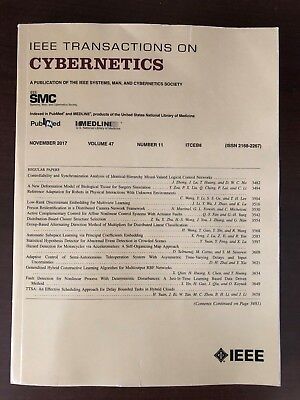Learning to Transfer for Evolutionary Multitasking
IF 9.4
1区 计算机科学
Q1 AUTOMATION & CONTROL SYSTEMS
引用次数: 0
Abstract
Evolutionary multitasking (EMT) is an emerging approach for solving multitask optimization problems (MTOPs) and has garnered considerable research interest. The implicit EMT is a significant research branch that utilizes evolution operators to enable knowledge transfer (KT) between tasks. However, current approaches in implicit EMT face challenges in adaptability, due to the limited use of different evolution operators with different parameter settings and insufficient utilization of evolutionary states for performing KT. This results in suboptimal exploitation of implicit KT’s potential to tackle a variety of MTOPs. To overcome these limitations, we propose a novel learning-to-transfer (L2T) framework to automatically discover efficient KT policies for the MTOPs at hand. Our framework conceptualizes the KT process as a learning agent’s sequence of strategic decisions within the EMT process. We propose an action formulation for deciding when and how to transfer, a state representation with informative features of evolution states, a reward formulation concerning convergence and transfer efficiency gain, and the environment for the agent to interact with MTOPs. We employ an actor-critic network structure for the agent and learn the policy via proximal policy optimization. This learned agent can be integrated with various evolutionary algorithms, enhancing their ability to address unseen MTOPs. Comprehensive empirical studies on both synthetic and real-world MTOPs, encompassing diverse intertask relationships, function classes, and task distributions are conducted to validate the proposed L2T framework. The results show a marked improvement in the adaptability and performance of implicit EMT when solving a wide spectrum of unseen MTOPs.学习迁移进化多任务处理
进化多任务(EMT)是解决多任务优化问题(MTOPs)的一种新兴方法,已经引起了相当大的研究兴趣。隐式EMT是利用演化算子实现任务间知识转移的一个重要研究分支。然而,目前的隐式EMT方法面临着适应性方面的挑战,这主要是由于使用不同参数设置的不同演化算子的有限性,以及没有充分利用演化状态来执行KT。这导致在处理各种mtop时,对隐性KT潜力的开发不够理想。为了克服这些限制,我们提出了一个新的学习迁移(L2T)框架,以自动发现手头mtop的有效KT策略。我们的框架将KT过程概念化为EMT过程中学习代理的战略决策序列。我们提出了一个决定何时和如何转移的行动公式,一个具有进化状态信息特征的状态表示,一个关于收敛和转移效率增益的奖励公式,以及智能体与mtop交互的环境。我们为智能体采用了一个行动者-批评家网络结构,并通过近端策略优化来学习策略。该学习代理可以与各种进化算法集成,增强其处理未见过的mtop的能力。本文对合成和现实世界的mtop进行了全面的实证研究,包括不同的任务间关系、功能类和任务分布,以验证所提出的L2T框架。结果表明,隐式EMT在求解广谱不可见mtop时的适应性和性能有了显著提高。
本文章由计算机程序翻译,如有差异,请以英文原文为准。
求助全文
约1分钟内获得全文
求助全文
来源期刊

IEEE Transactions on Cybernetics
COMPUTER SCIENCE, ARTIFICIAL INTELLIGENCE-COMPUTER SCIENCE, CYBERNETICS
CiteScore
25.40
自引率
11.00%
发文量
1869
期刊介绍:
The scope of the IEEE Transactions on Cybernetics includes computational approaches to the field of cybernetics. Specifically, the transactions welcomes papers on communication and control across machines or machine, human, and organizations. The scope includes such areas as computational intelligence, computer vision, neural networks, genetic algorithms, machine learning, fuzzy systems, cognitive systems, decision making, and robotics, to the extent that they contribute to the theme of cybernetics or demonstrate an application of cybernetics principles.
 求助内容:
求助内容: 应助结果提醒方式:
应助结果提醒方式:


